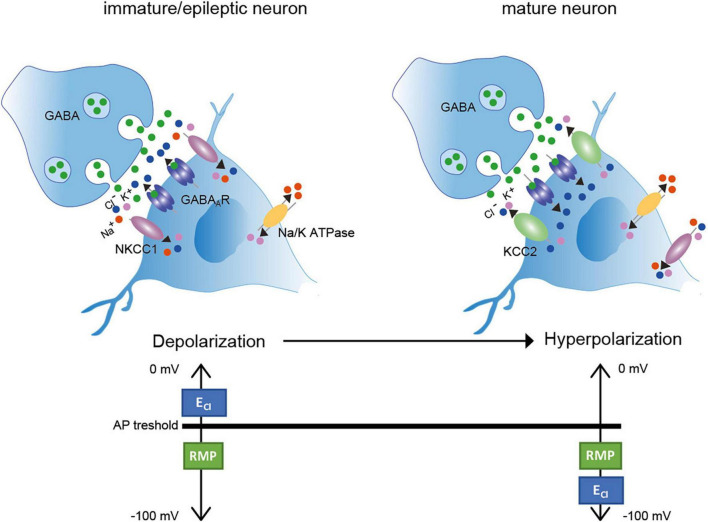FIGURE 1.
Depolarization/Hyperpolarization shift in inhibitory neurons (Left). In immature neurons, high transport activity of NKCC1 results in increased [Cl–]i. Binding of the inhibitory neurotransmitter GABA to GABAA receptors results in Cl– outward currents and thus depolarization. Here, the ECl– is more depolarized than the AP threshold (Right). In mature neurons, KCC2 activity is increased resulting in decreased [Cl–]i. Binding of the inhibitory neurotransmitter GABA to its receptor results in Cl– inward currents and thus hyperpolarization. ECl– is here hyperpolarized according to the resting membrane potential. AP: action potential; RMP: resting membrane potential. Green dots: GABA; red dots: Na+; purple dots: K+; blue dots: Cl–. Figure modified from Moore et al. (2017).

